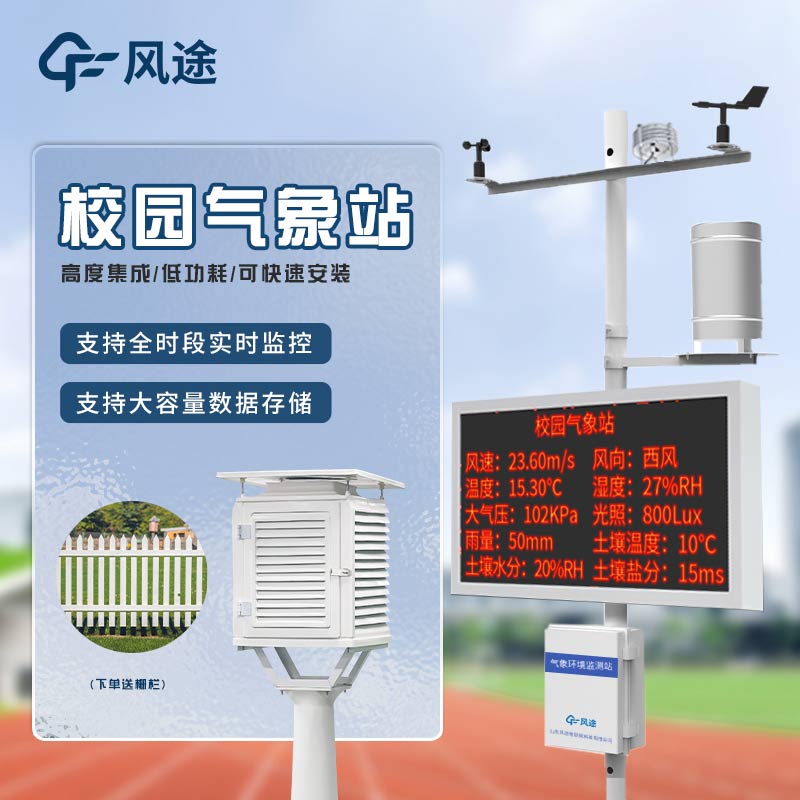Meteorological environment monitoring equipment supplier
Insist on doing high-precision customer favorite technology products
With the acceleration of the urbanization process, the connection between humans and nature has become closer, and more attention has been paid to ecological environment protection and research. As a crucial place for education and scientific research, campuses possess unique geographical and humanistic advantages, making them an ideal choice for conducting meteorological observation and education.
To enhance the awareness and protection consciousness of teachers and students regarding the campus meteorological environment, many schools have introduced the Campus Weather Station project.
The Campus Weather Station has the following core functions:
Real-time meteorological data collection and upload.
By using meteorological sensors such as those for temperature, humidity, air pressure, wind speed, and wind direction, meteorological data is accurately collected and uploaded to the cloud platform in real-time through modules like 4G. Users can check the real-time meteorological information on campus at any time through mobile apps or web pages, such as data on temperature, humidity, air pressure, wind speed, and wind direction. These data can provide references for campus activity arrangements and agricultural experiments. For example, before a sports meeting, competition events can be arranged according to the wind speed and direction, and the agricultural club can take care of plants based on the temperature, humidity, and light data.
Meteorological data analysis and warning.
The system analyzes the uploaded meteorological data. When abnormal weather conditions, such as rainstorms, strong winds, and high temperatures, which may affect the normal order of the campus or the safety of teachers and students, are detected, warning messages will be sent to campus administrators and teachers and students in a timely manner, reminding them to take corresponding preventive measures, such as closing doors and windows in advance and suspending outdoor activities, to ensure campus safety.
Historical meteorological data query and analysis.
The cloud platform stores a large amount of historical meteorological data. Users can query past meteorological information within a certain time range and generate visual charts to intuitively present the changing trends of meteorological data. This is helpful for teaching and research in subjects such as geography and meteorology. Students can understand the local climate change laws by analyzing historical data, cultivating their scientific research abilities and interest in meteorology.
